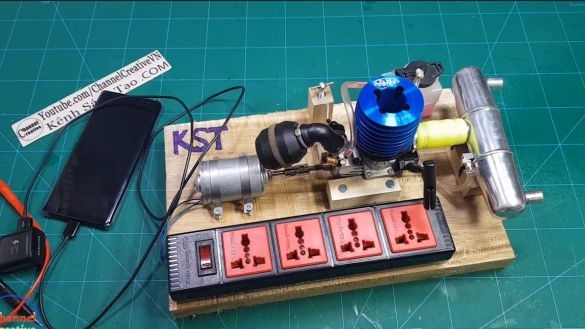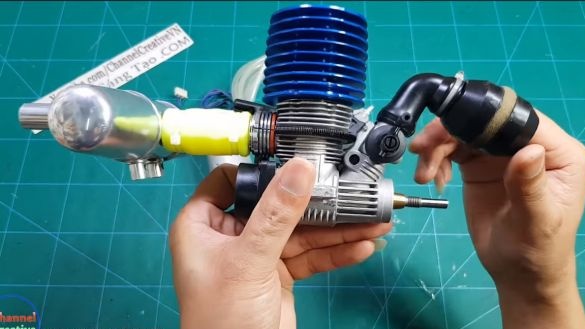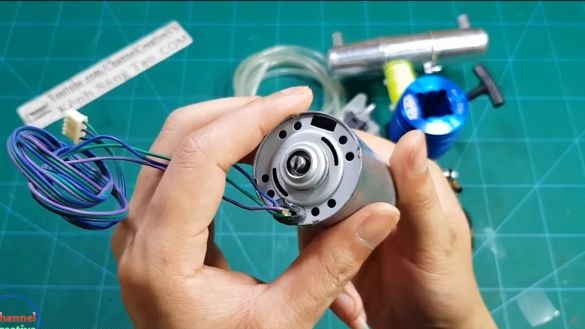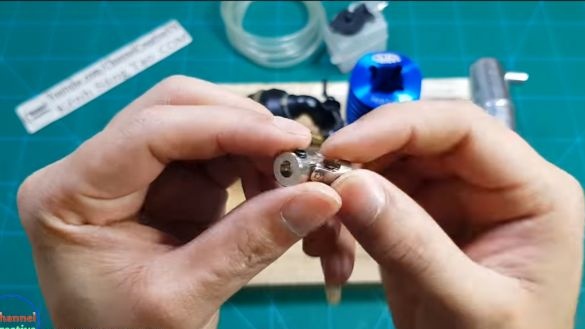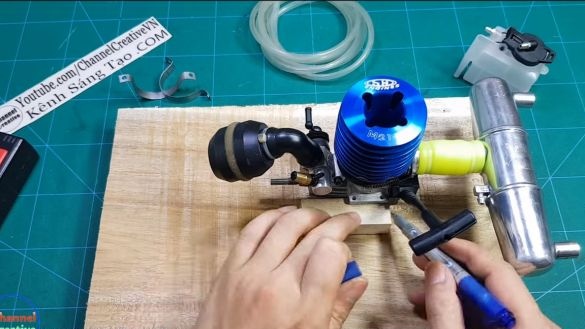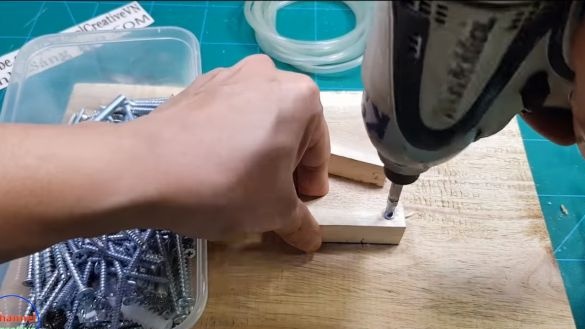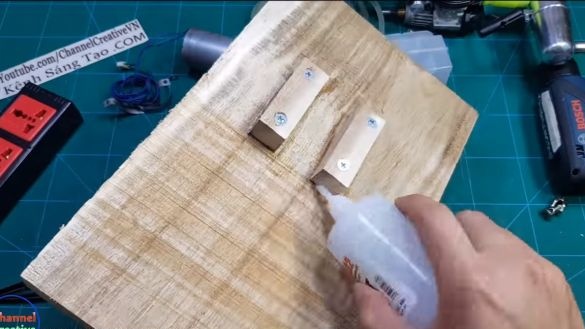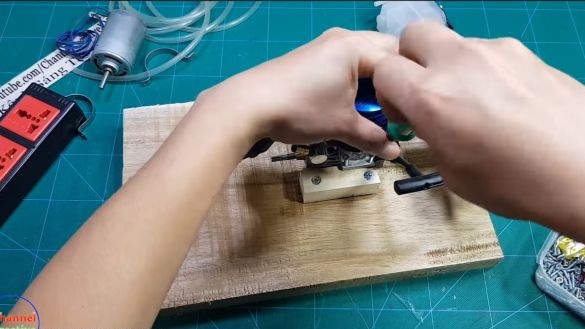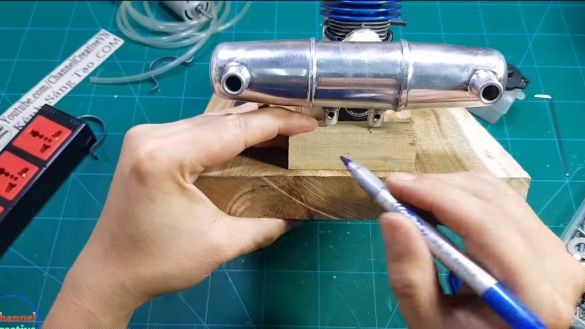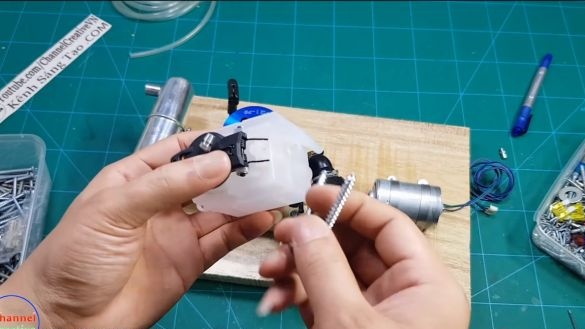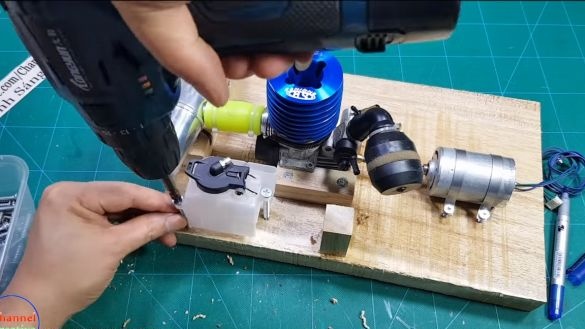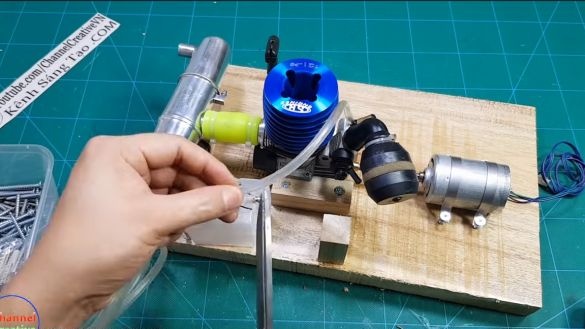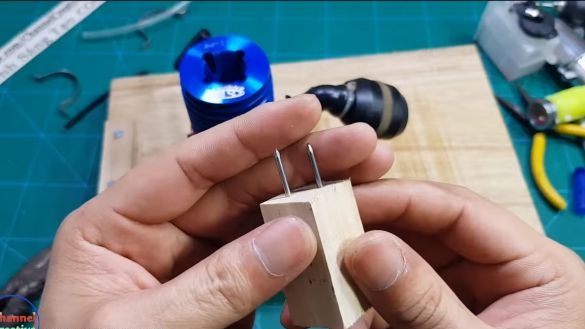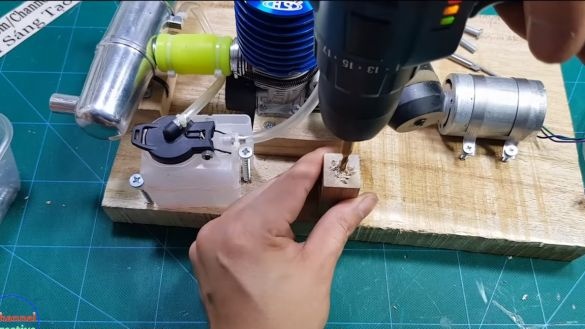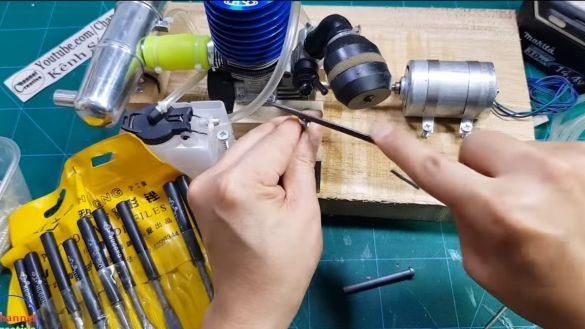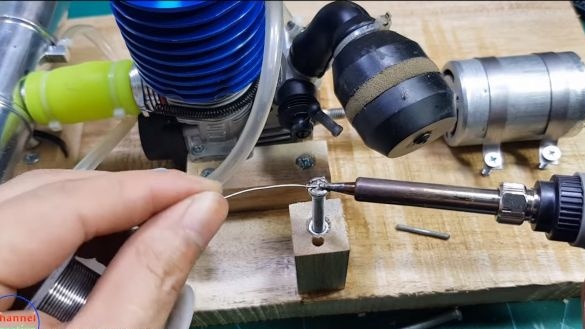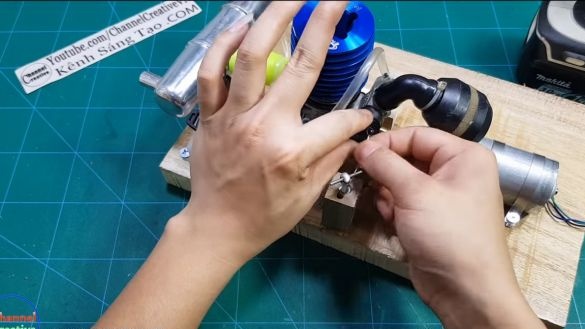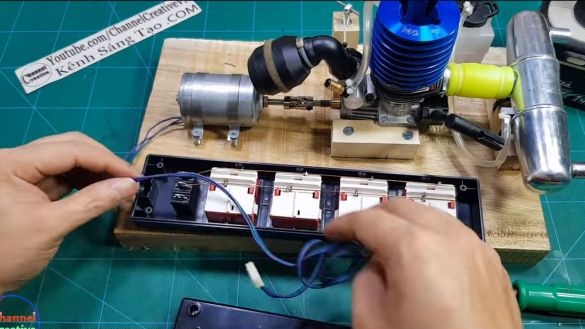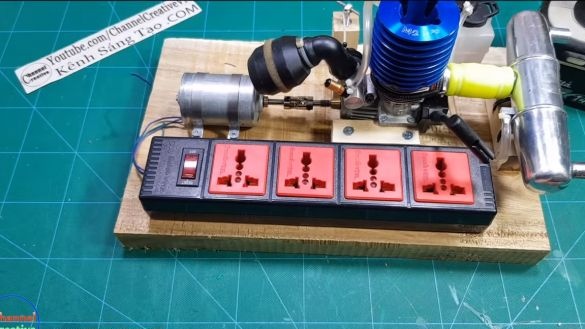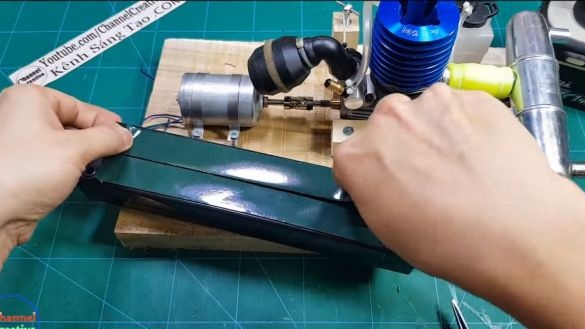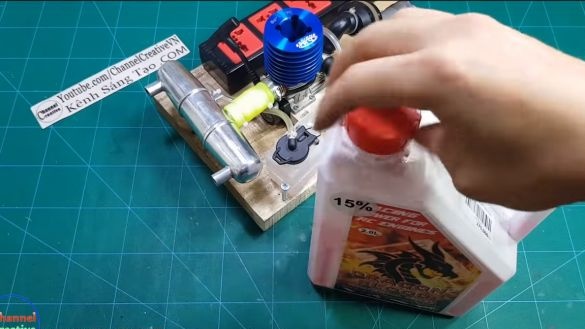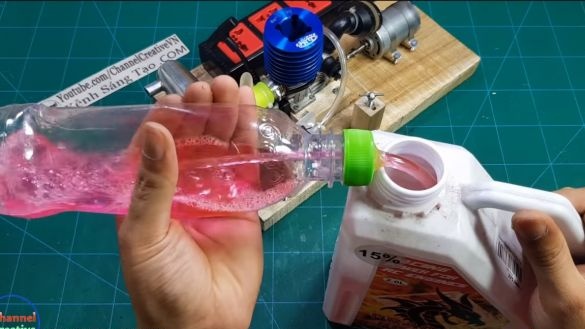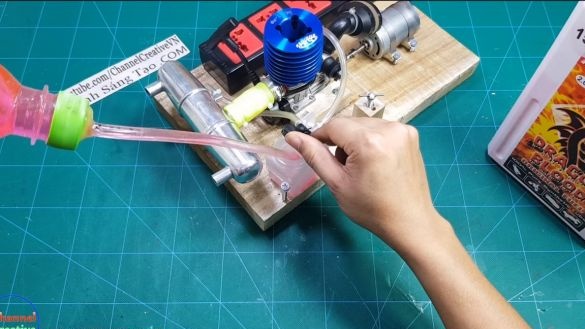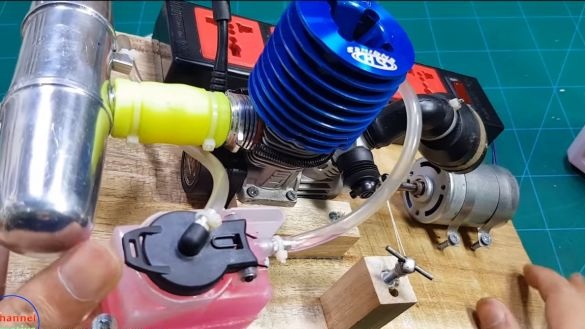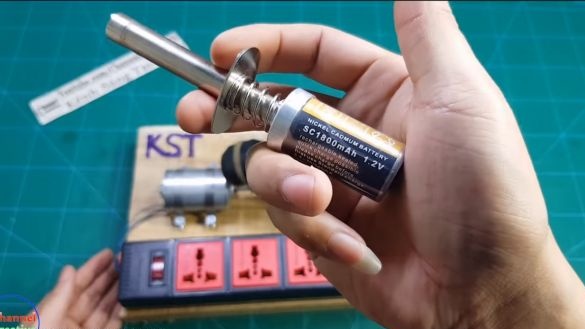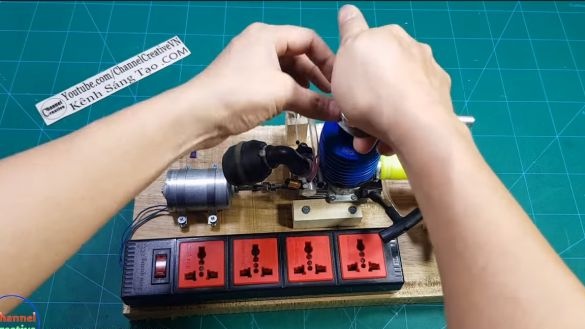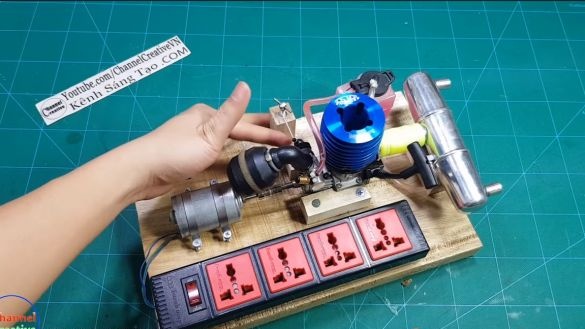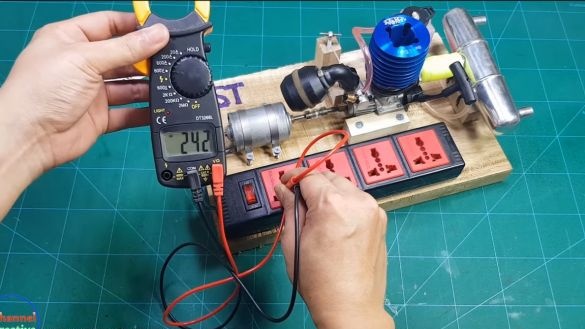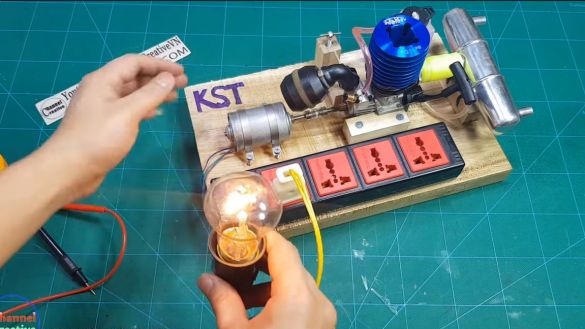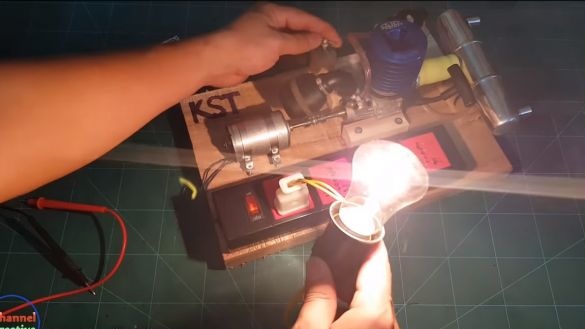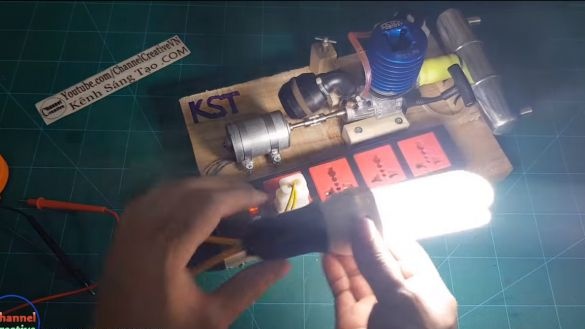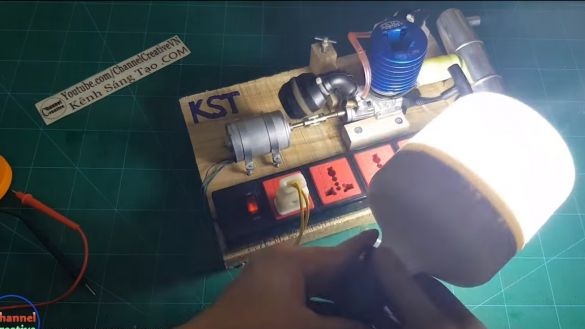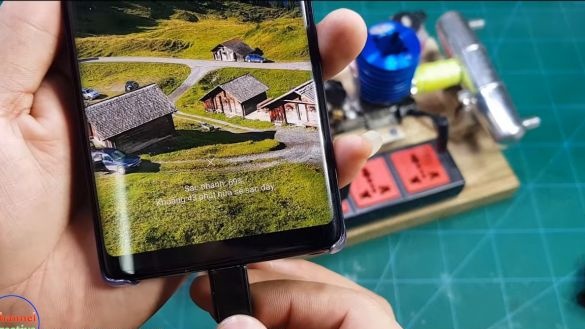Hello everyone, I bring to your attention a simple generator on, which generates a voltage of 220V, or even more, it all depends on the speed. The generated voltage is enough to connect several bulbs, charge the phone, laptop and other equipment. This will be a great option if you live away from the city, where the lights are often turned off. In addition, this generator is small and light, which allows you to take it with you, setting off to relax in nature.
Nitroengines are actively used in the manufacture of various models, these are aircraft models, radio-controlled cars and much more. Their principle of operation is similar to diesel, but nitro fuel is used instead of diesel fuel here. The motor starts with a starter using a glow plug. The disadvantage of these engines can be considered that they do not work on ordinary gasoline, which can be easily obtained. But you can always use a chainsaw engine or something similar. As for the generator, a small DC motor can be used as it; it does not require voltage to start operation. So, we will consider in more detail how to make such a generator.
Materials and tools used by the author:
Material List:
- ;
- RS-5512 or similar;
- board and whetstones;
- self-tapping screws;
- socket;
- screws and nuts;
- plastic ties;
- Super glue;
- adapter (cardan type);
- double-sided adhesive tape.
Tool List:
- soldering iron;
- drill;
- screwdriver;
- multimeter.
Generator manufacturing process:
Step one. Install the nitro engine
First of all, we need to securely fix the nitro engine. The author used a piece of a board as a basis, and wooden blocks were used for fastenings. We cut the sticks to the desired length, drill holes and fasten the screws to the base. For reliability, they can be glued with superglue or PVA glue. At the end, screw the motor itself onto the blocks.
There is a silencer on the engine, it must also be screwed to the base. To do this, use another bar of the appropriate size. We fix the muffler using plastic ties, as the author.
Step Two Generator Installation
The author used a small motor as a generator. What kind of model he is, remains unknown. This is probably a 220V engine similar to the RS-5512, but there are many other analogues.First of all, we connect the shafts of the nitroengine and the electric motor. For these purposes, the author used a cardan drive. This will allow you to remove the vibration, because it will be problematic to accurately install both shafts at the same level. And the universal joint compensates for this. Instead of a cardan transmission, a piece of rubber hose is also quite suitable.
To mount the engine, we use two metal clamps, you can make them yourself from thin sheet steel. Fasten the engine using screws.
Step Three Install the gas tank
You can install the gas tank, it should go complete with the motor. We fasten the gas tank to the base with two screws of suitable length. Now we take the tubes and bring the fuel supply to the motor. It is advisable to use transparent tubes to see if fuel enters the engine at startup.
Step Four We make a speed regulator
You need to make a speed control knob so that you can adjust the speed of rotation and thereby adjust the voltage that the generator generates. Install the rack in the form of a block, and then drill a hole and paste the nut there. Wrap a screw on top, to the head of which the author decided to solder a small handle. Well, then we wind the thread onto the screw, which we connect to the carburetor damper, which controls low revs.
Step Five Install the outlet
Install the socket on the base, connect the wires from the engine to it. The author has a socket with a switch, which allows you to quickly turn off the socket in case of something, and it will turn off itself in case of a short circuit. The author decided to fix the socket with double-sided adhesive tape.
Step Six Fill fuel and test the generator
Prepare special nitro fuel for the engine and fill it in the gas tank. In order not to spill fuel, the author conveniently picks it up with a bottle and a piece of hose. Tilt the platform slightly so that the fuel through the hose reaches the carburetor of the motor. Well, then you can start the motor. Here you will need a special starting battery, which will allow you to glow the glow plug.
We start the motor and measure the voltage that the generator generates. It can be far beyond 220V, all 300V can be. If this is the case, the revolutions need to be slightly underestimated with the help of the valve that we did earlier. We achieve a voltage in the region of 240V, with a load it just sags to about 220V. As an experiment, the author tried to connect an incandescent lamp to 220V, it shines quite brightly. Also, fluorescent lamps were connected, they shine without any special problems. Also, the author ventured to connect charging for a mobile, and then for a laptop. Devices charge without problems. But this is a bit risky, since the voltage frequency that our device generates is unknown.
That's all, homemade can be considered finished. I hope you enjoyed the project, and you found something new for yourself. Good luck and inspiration in the manufacture of your own generator or other homemade products. Do not forget to share your best practices with us.

